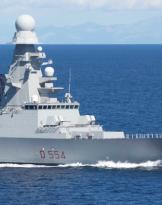On June 16, the government replied to the question of the FdI senator Isabella Rauti, a member of the Senate Defense Commission, regarding the exclusion of Italy from the Franco-German project called Main Ground Combat System, which foresees the development of a new combat tank in order to replace, by 2035, the LEOPARD 2A7 and the AMX-56 LECLERC.
The agreement assumes the sharing of 50% of the costs of the project, while for both countries, according to the announcement of the Ministry of Defense of Berlin, sufficient intellectual property rights for future uses of the developed technologies.
The division of competences for the respective industries involved in the program, in addition to the uncertainties about the possibility of adopting shared rules regarding exports to other countries, were the most problematic issues to be defined, at least in this first phase of the program.
This agreement serves to allow Rheinmetall and Krauss-Maffei Wegmann (KMW) to divide the orders due to Germany, while Nexter will be responsible for the French part.
Given these premises, what the government replied about Senator Rauti's question, or rather, appears unlikely to evaluate a possible opening of the Franco-German partnership to the project.

It is also true that the government, alternatively, should the Franco-German project not be opened to other partners, will try to identify other countries for the construction of a European tank. The fact is that within the European Union there are no other countries with a strong background inherent in the design and implementation of MBT.
As already suggested in other articles, the Italian Defense should verify the possibility of a collaboration with the British (also considering the probable accession of Rome to the 6th generation TEMPEST fighter) and the Israelis, nations with high industrial capabilities in the armored vehicle sector .
As for the Franco-German program, once the characteristics required for the new wagon have been defined, the technological demonstration phase will follow until 2024, which should end with the realization of a certain number of demonstration vehicles. Between 2024 and 2027 the demonstrators will be subjected to field tests and further developed, in order to arrive at the production phase in 2028, with the first deliveries starting from 2035.
In the meantime, as a bridging solution (!), The Conte government intends to continue with the absurd ARIETE updating program.

It reads in the reply to the Commission that at the same time in order to be able to continue to have readily usable structures, the national commitment is focused on an action aimed at improving the performance of the ARIETE wagon, guaranteeing its improvement to the state of the art so that it can comply with the capacitive specifications outlined in the requirements, both national and NATO, so as to be able to act as a "bridge solution" up to rescheduling with a new generation platform.
It is clear from what was declared (if there was need for further evidence) the total ignorance, on the part of the government, about the current conditions of the tank component of the Italian Army.
We will not elaborate on the description of the numerous, critical issues of Aries, widely described in the previous articles (and which probably caused the death of Corporal Marco Bisconti in 2006), however it is necessary to remember that out of three tank regiments (the 32nd and 132 ° of the brigade Ram; the 4th of the brigade Garibaldi), all with a theoretical staff of 41 media, only about thirty ARIETE are operating. The problem is that the Italian tank will never be a "bridge solution" as their presentation, in the Monteromano shooting range in 1987, was already obsolete.
The allocation of € 35 million for the upgrade of three prototypes (4/5 LEOPARD 2A7 + could be purchased for the same amount) would seem oversized. A wagon is not enough to buy it because should be continuously updated, to adapt it to changing operational needs, but above all we must not repeat the mistake of wanting to do it alone, without making use of the collaboration of one or more partners, a situation that would allow lowering production costs.
Read also:
"New European wagon: French and German do not want us"
"The situation of the Italian armed forces: unfortunately we continue with Aries"
"What future for the armored component? Leopard, Merkava, Aries 2 or ...?"
Photo: US Army / web / Italian Army












